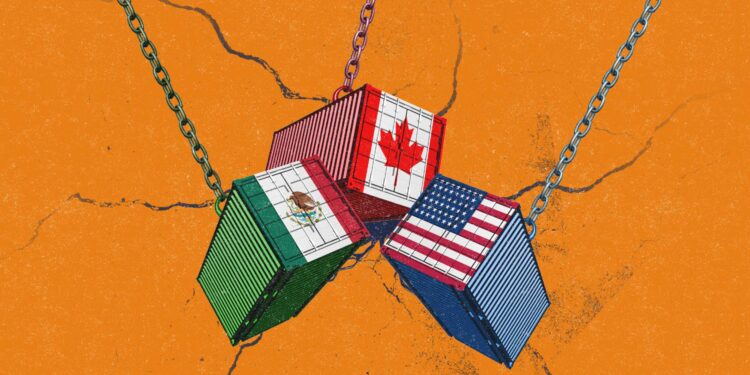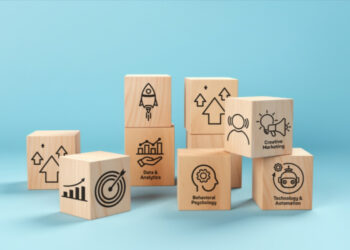Tariffs are one of the most debated topics in economics and politics. While they often make headlines, many Americans are left wondering what tariffs actually are and how they impact the economy. Are they helpful, harmful, or a bit of both? The reality is complex, and tariffs can ripple through the economy in ways that affect businesses, consumers, and everyday workers alike.
This article dives into what tariffs are, how they work, and what they could mean for the U.S. economy. Our goal is to help you understand the broader implications so you can make sense of the ongoing discussion—and what it might mean for you personally.
What Are Tariffs? An Easy Breakdown
Let’s start with the basics. A tariff is essentially a tax imposed by a government on goods imported from other countries. The idea is simple enough, but the goals and effects can be anything but straightforward.
There are two common types of tariffs:
- Protective Tariffs:
These are designed to shield domestic industries by making imported goods more expensive. For instance, if the U.S. imposes a tariff on foreign-made cars, the higher price of those cars might encourage consumers to buy American-made vehicles instead. - Revenue Tariffs:
These are intended primarily to generate income for the government, though they’re less common in modern, wealthy economies like the U.S.
While these tariffs increase revenue and can protect domestic jobs, they also come with some downsides. The result is often a tug-of-war between protecting U.S. industries and the costs passed on to consumers.
How Do Tariffs Impact the Economy?
Tariffs can affect the economy in several ways, and their effects don’t operate in a vacuum. Here are the most important areas where tariffs tend to play a role:
1. Higher Prices for Consumers
One of the most immediate outcomes of tariffs is cost. When tariffs increase the price of imported goods, the businesses importing those products often pass that expense on to their customers. The result? Higher prices on essentials, from electronics to groceries.
For example, a tariff on imported steel could raise the price of any product made with steel—think cars, appliances, and construction materials.
Imagine going to the store to buy a new washing machine, only to find it’s $100 more expensive than it was last year. Chances are, those costs trickle down to you as a consumer due to a tariff somewhere along the supply chain.
2. Impact on Job Markets
Tariffs are often promoted as a way to protect and even grow jobs in specific sectors—such as manufacturing. By making imports more expensive, local industries might gain a competitive edge, which could theoretically lead to job creation.
However, the ripple effect can sometimes lead to job losses in other sectors. For instance:
- Industries reliant on imported goods (like retail or manufacturing) might experience higher costs and lay off workers to compensate for rising expenses.
- Export-driven sectors can take a hit if other countries retaliate with their own tariffs, making American goods less competitive abroad.
3. Trade Tensions and Retaliation
Another major risk is retaliation. When one country imposes tariffs, others often strike back with their own. This can escalate into a “trade war,” where countries continuously raise tariffs against one another.
For example, when the U.S. imposed tariffs on Chinese goods during tense trade negotiations, China retaliated by taxing American exports such as soybeans, beef, and aerospace products. This hurt American farmers and businesses that relied on overseas markets to sell their goods.
4. Revenue for the Government
One advantage of tariffs is the revenue they generate for the government. This can be used for public projects or deficit reduction. But this revenue boost often comes at the cost of higher consumer prices, potentially neutralizing the financial benefit for individuals.
5. Supply Chain Disruptions
Tariffs can significantly impact global supply chains. Many U.S. businesses rely on imported components to produce their goods. When tariffs hit, these businesses may face increased costs, difficulty sourcing materials, or delays in production lines.
For companies operating on tight margins—many of which are small or medium-sized businesses—these disruptions can be disastrous.
Who Benefits from Tariffs?
While tariffs are controversial, they can benefit certain groups. Here are the primary winners:
- Domestic Producers:
Industries that compete directly with imports (e.g., steel mills, textile manufacturers) stand to gain a competitive edge. - Workers in Protected Industries:
Jobs in industries shielded by tariffs could become more stable—or even grow—as production stays domestic. - The Government:
Tariffs can generate billions of dollars in revenue.
However, critics argue that these benefits often come at a high cost to consumers, businesses, and global trade partnerships.
What Tariffs Could Mean for You
Even if you’re not directly involved in industries impacted by tariffs, you may feel the effects in your day-to-day life. Here’s how:
- Higher Costs on Everyday Goods:
From groceries to cars, consumers often absorb the brunt of tariff impacts. - Job Market Shifts:
If you work in industries tied to imports or exports, your job prospects could be influenced. - Economic Uncertainty:
Long-term trade wars and tariff disputes can create economic instability, which affects everything from investment opportunities to interest rates.
Is There a Better Solution?
The debate over tariffs often boils down to balancing the benefits of protecting domestic markets with the drawbacks of disrupting global trade. Economists and lawmakers are constantly exploring alternatives, such as:
- Trade Agreements to foster cooperation and lower barriers between nations.
- Subsidies to support domestic industries in ways that don’t disrupt consumer markets as dramatically.
- Investments in Technology and Productivity to make U.S. industries more competitive on a global scale, without relying on tariffs as a crutch.
What’s Next for the U.S. Economy?
The future of tariffs in America depends on domestic policy priorities, international relations, and economic trends. With globalization shaping how goods are made and moved, policymakers face tough decisions about when and how to use tariffs effectively.
Whether you’re a consumer, worker, or business owner, staying informed about tariff policies can help you prepare for how they might impact your finances, job prospects, or spending habits.


















